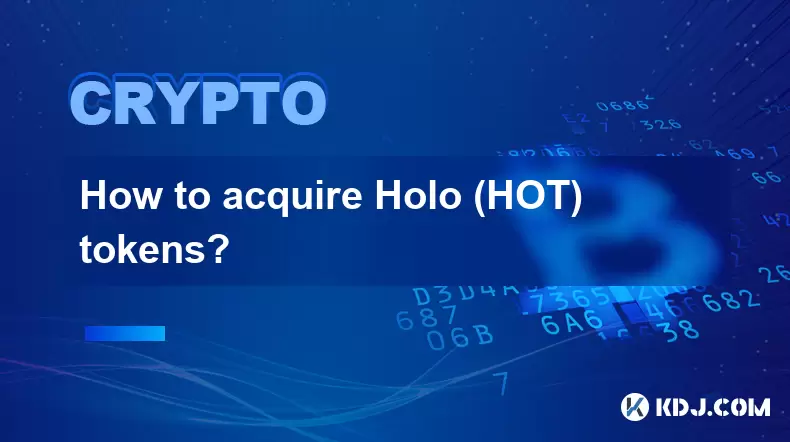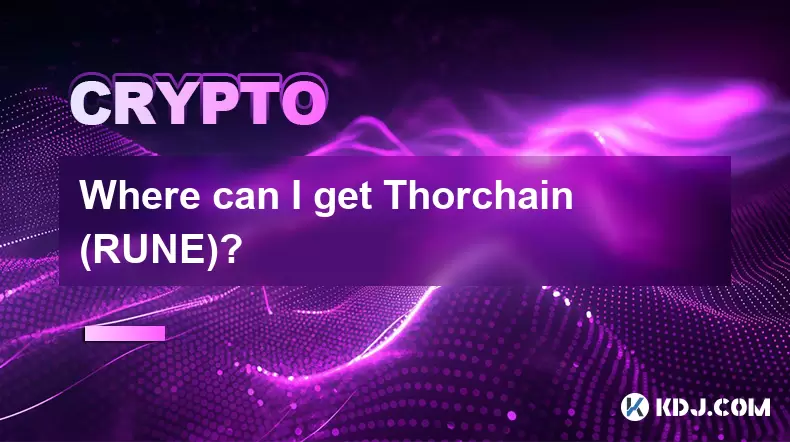-
 Bitcoin
Bitcoin $117500
2.15% -
 Ethereum
Ethereum $3911
6.19% -
 XRP
XRP $3.316
10.79% -
 Tether USDt
Tether USDt $1.000
0.01% -
 BNB
BNB $787.2
2.24% -
 Solana
Solana $175.2
4.15% -
 USDC
USDC $0.9999
0.00% -
 Dogecoin
Dogecoin $0.2225
8.40% -
 TRON
TRON $0.3383
0.28% -
 Cardano
Cardano $0.7868
6.02% -
 Stellar
Stellar $0.4382
9.34% -
 Hyperliquid
Hyperliquid $40.92
7.56% -
 Sui
Sui $3.764
7.63% -
 Chainlink
Chainlink $18.48
10.66% -
 Bitcoin Cash
Bitcoin Cash $582.1
1.88% -
 Hedera
Hedera $0.2601
6.30% -
 Avalanche
Avalanche $23.33
4.94% -
 Ethena USDe
Ethena USDe $1.001
0.02% -
 Litecoin
Litecoin $122.3
2.04% -
 UNUS SED LEO
UNUS SED LEO $8.969
-0.27% -
 Toncoin
Toncoin $3.339
0.86% -
 Shiba Inu
Shiba Inu $0.00001287
4.30% -
 Uniswap
Uniswap $10.43
7.38% -
 Polkadot
Polkadot $3.861
5.08% -
 Dai
Dai $1.000
0.02% -
 Bitget Token
Bitget Token $4.513
3.41% -
 Monero
Monero $267.7
-6.18% -
 Cronos
Cronos $0.1499
4.14% -
 Pepe
Pepe $0.00001110
5.15% -
 Aave
Aave $284.9
8.28%
How to avoid slippage in SOL transactions?
To minimize slippage in SOL transactions, use limit orders, trade during high liquidity periods, set slippage tolerance, split large orders, and employ advanced trading tools.
Apr 19, 2025 at 12:15 pm

Slippage in cryptocurrency transactions, particularly in Solana (SOL) transactions, refers to the difference between the expected price of a trade and the price at which the trade is actually executed. Slippage can occur due to various factors such as market volatility, liquidity, and the size of the transaction. For traders and investors dealing with SOL, minimizing slippage is crucial to ensure that they get the best possible price for their trades. This article will explore several strategies and tools that can help you avoid slippage in SOL transactions.
Understanding Slippage in SOL Transactions
Before delving into the strategies for avoiding slippage, it's essential to understand what causes it. Slippage in SOL transactions can occur due to high market volatility, low liquidity, and large order sizes. When the market is highly volatile, the price of SOL can change rapidly between the time you place an order and when it gets executed. Similarly, if there is low liquidity in the market, your order might not be filled at your desired price, leading to slippage. Additionally, if you place a large order, it may not be possible to fill it at a single price, causing the average price to differ from your expected price.
Using Limit Orders to Minimize Slippage
One of the most effective ways to avoid slippage in SOL transactions is by using limit orders. Unlike market orders, which are executed at the current market price, limit orders allow you to specify the price at which you want your order to be executed. Here's how you can use limit orders to minimize slippage:
- Choose the Right Exchange: First, ensure that you are using a reputable exchange that supports limit orders for SOL transactions. Some popular exchanges include Binance, Coinbase Pro, and Kraken.
- Set Your Limit Price: When placing a limit order, you need to set the price at which you want to buy or sell SOL. This price should be based on your analysis of the market and your desired entry or exit point.
- Monitor Your Order: After placing a limit order, monitor it to see if it gets filled. If the market price moves away from your limit price, you might need to adjust your order to increase the chances of it being executed.
- Be Patient: Limit orders may not be executed immediately, especially if the market price is far from your limit price. Be patient and wait for the market to come to your desired price.
Trading During High Liquidity Periods
Another strategy to minimize slippage in SOL transactions is to trade during periods of high liquidity. High liquidity means there are more buyers and sellers in the market, making it easier to execute orders at your desired price. Here are some tips for trading during high liquidity periods:
- Trade During Peak Hours: Typically, cryptocurrency markets are more liquid during peak trading hours, which often coincide with the opening hours of major financial markets. For SOL, this might mean trading during the hours when the New York or London markets are open.
- Avoid Trading During Holidays: Liquidity can drop significantly during holidays and weekends, leading to higher slippage. Try to avoid trading SOL during these times if possible.
- Use Trading Volume as a Guide: Check the trading volume of SOL on your chosen exchange. Higher trading volumes usually indicate higher liquidity, which can help reduce slippage.
Utilizing Slippage Tolerance Settings
Many decentralized exchanges (DEXs) and trading platforms that support SOL transactions offer slippage tolerance settings. These settings allow you to specify the maximum amount of slippage you are willing to accept. Here's how you can use slippage tolerance settings to minimize slippage:
- Access the Trading Platform: Log into your preferred DEX or trading platform that supports SOL transactions.
- Find the Slippage Settings: Look for the slippage tolerance settings in the trading interface. This is often found in the advanced settings or trading options section.
- Set Your Slippage Tolerance: Choose a slippage tolerance that you are comfortable with. A lower slippage tolerance means your order will only be executed if the price does not deviate too much from your expected price. However, setting it too low might result in your order not being filled.
- Place Your Order: Once you have set your slippage tolerance, place your order as usual. The platform will then attempt to execute your order within the specified slippage tolerance.
Splitting Large Orders
If you are trading a large amount of SOL, splitting your order into smaller chunks can help minimize slippage. Large orders can move the market, causing the price to change significantly before the entire order is filled. Here's how you can split your orders:
- Determine Your Total Order Size: First, determine the total amount of SOL you want to buy or sell.
- Calculate Smaller Chunks: Divide your total order into smaller, more manageable chunks. The size of each chunk will depend on the liquidity of the market and your desired level of slippage.
- Place Multiple Orders: Instead of placing one large order, place multiple smaller orders at the same or slightly different prices. This can help you get a better average price and reduce the impact of your order on the market.
- Monitor and Adjust: Keep an eye on the market and adjust your subsequent orders based on the execution of the previous ones. If the market moves in your favor, you might be able to get a better price for the remaining chunks.
Using Advanced Trading Tools
To further minimize slippage in SOL transactions, consider using advanced trading tools and algorithms. These tools can help you execute trades more efficiently and at better prices. Here are some examples of advanced trading tools you might find useful:
- Algorithmic Trading Platforms: Platforms like 3Commas and Cryptohopper offer algorithmic trading strategies that can help you execute SOL transactions with minimal slippage. These platforms often use complex algorithms to analyze market conditions and execute trades at optimal times.
- Trading Bots: Trading bots can be programmed to place and manage orders automatically. They can help you take advantage of market opportunities and execute trades at the best possible prices.
- Liquidity Aggregators: Some platforms aggregate liquidity from multiple sources, allowing you to access better prices and reduce slippage. Examples include 1inch and Matcha, which can be used for SOL transactions on various DEXs.
Frequently Asked Questions
Q: Can slippage be completely eliminated in SOL transactions?
A: While it is not possible to completely eliminate slippage in SOL transactions, the strategies mentioned in this article can significantly reduce it. Factors such as market volatility and liquidity will always play a role in determining the extent of slippage.
Q: How does the size of a SOL transaction affect slippage?
A: The size of a SOL transaction can significantly impact slippage. Larger orders are more likely to cause price movements, leading to higher slippage. By splitting large orders into smaller chunks, you can mitigate this effect and achieve better average prices.
Q: Are there any specific times of the day when slippage is less likely to occur in SOL transactions?
A: Slippage is generally less likely to occur during peak trading hours when liquidity is high. For SOL, this might mean trading during the opening hours of major financial markets like New York or London. However, market conditions can vary, so it's essential to monitor liquidity and trading volumes.
Q: How can I monitor liquidity for SOL transactions?
A: You can monitor liquidity for SOL transactions by checking the trading volume and order book depth on your chosen exchange. Higher trading volumes and deeper order books indicate higher liquidity, which can help reduce slippage. Many exchanges provide real-time data on these metrics, allowing you to make informed trading decisions.
Disclaimer:info@kdj.com
The information provided is not trading advice. kdj.com does not assume any responsibility for any investments made based on the information provided in this article. Cryptocurrencies are highly volatile and it is highly recommended that you invest with caution after thorough research!
If you believe that the content used on this website infringes your copyright, please contact us immediately (info@kdj.com) and we will delete it promptly.
- XRP ETF, Bitcoin ETF, and Japan: A New Era for Crypto Investing?
- 2025-08-08 14:30:12
- Crypto, Congress, and Bills: Navigating the Regulatory Landscape in 2025
- 2025-08-08 14:30:12
- Union Jack Oil, Unused Gas, and Bitcoin: A New York Minute on UK's Crypto-Energy Play
- 2025-08-08 14:50:12
- Bitcoin Price: Bullish Flag Points to $123K Breakout?
- 2025-08-08 14:50:12
- Crypto Group's WNBA Dildo Toss: Meme Coin Mania or Just Plain Dumb?
- 2025-08-08 14:55:13
- Stablecoins, Hong Kong, and On-Chain Finance: Navigating the Regulatory Maze
- 2025-08-08 12:30:12
Related knowledge

Where can I buy UMA (UMA)?
Aug 07,2025 at 06:42pm
Understanding UMA and Its Role in Decentralized FinanceUMA (Universal Market Access) is an Ethereum-based decentralized finance (DeFi) protocol design...

Where can I purchase Siacoin (SC)?
Aug 08,2025 at 11:14am
Understanding Siacoin (SC) and Its Role in the Sia NetworkSiacoin (SC) is the native cryptocurrency of the Sia decentralized cloud storage platform, a...

Where can I buy OMG Network (OMG)?
Aug 08,2025 at 12:57pm
Understanding OMG Network (OMG) and Its PurposeThe OMG Network, originally known as OmiseGO, is a layer-2 scaling solution built on the Ethereum block...

What exchanges support buying IOTA (MIOTA)?
Aug 07,2025 at 09:58pm
Understanding the Role of Private Keys in Cryptocurrency SecurityIn the world of cryptocurrency, private keys are the cornerstone of ownership and con...

How to acquire Holo (HOT) tokens?
Aug 08,2025 at 05:56am
Understanding Holo (HOT) and Its EcosystemHolo (HOT) is a cryptocurrency token associated with the Holo ecosystem, which is built on the Holochain fra...

Where can I get Thorchain (RUNE)?
Aug 08,2025 at 08:07am
Understanding the Role of Seed Phrases in Cryptocurrency WalletsA seed phrase, also known as a recovery phrase or mnemonic phrase, is a critical compo...

Where can I buy UMA (UMA)?
Aug 07,2025 at 06:42pm
Understanding UMA and Its Role in Decentralized FinanceUMA (Universal Market Access) is an Ethereum-based decentralized finance (DeFi) protocol design...

Where can I purchase Siacoin (SC)?
Aug 08,2025 at 11:14am
Understanding Siacoin (SC) and Its Role in the Sia NetworkSiacoin (SC) is the native cryptocurrency of the Sia decentralized cloud storage platform, a...

Where can I buy OMG Network (OMG)?
Aug 08,2025 at 12:57pm
Understanding OMG Network (OMG) and Its PurposeThe OMG Network, originally known as OmiseGO, is a layer-2 scaling solution built on the Ethereum block...

What exchanges support buying IOTA (MIOTA)?
Aug 07,2025 at 09:58pm
Understanding the Role of Private Keys in Cryptocurrency SecurityIn the world of cryptocurrency, private keys are the cornerstone of ownership and con...

How to acquire Holo (HOT) tokens?
Aug 08,2025 at 05:56am
Understanding Holo (HOT) and Its EcosystemHolo (HOT) is a cryptocurrency token associated with the Holo ecosystem, which is built on the Holochain fra...

Where can I get Thorchain (RUNE)?
Aug 08,2025 at 08:07am
Understanding the Role of Seed Phrases in Cryptocurrency WalletsA seed phrase, also known as a recovery phrase or mnemonic phrase, is a critical compo...
See all articles

























































































